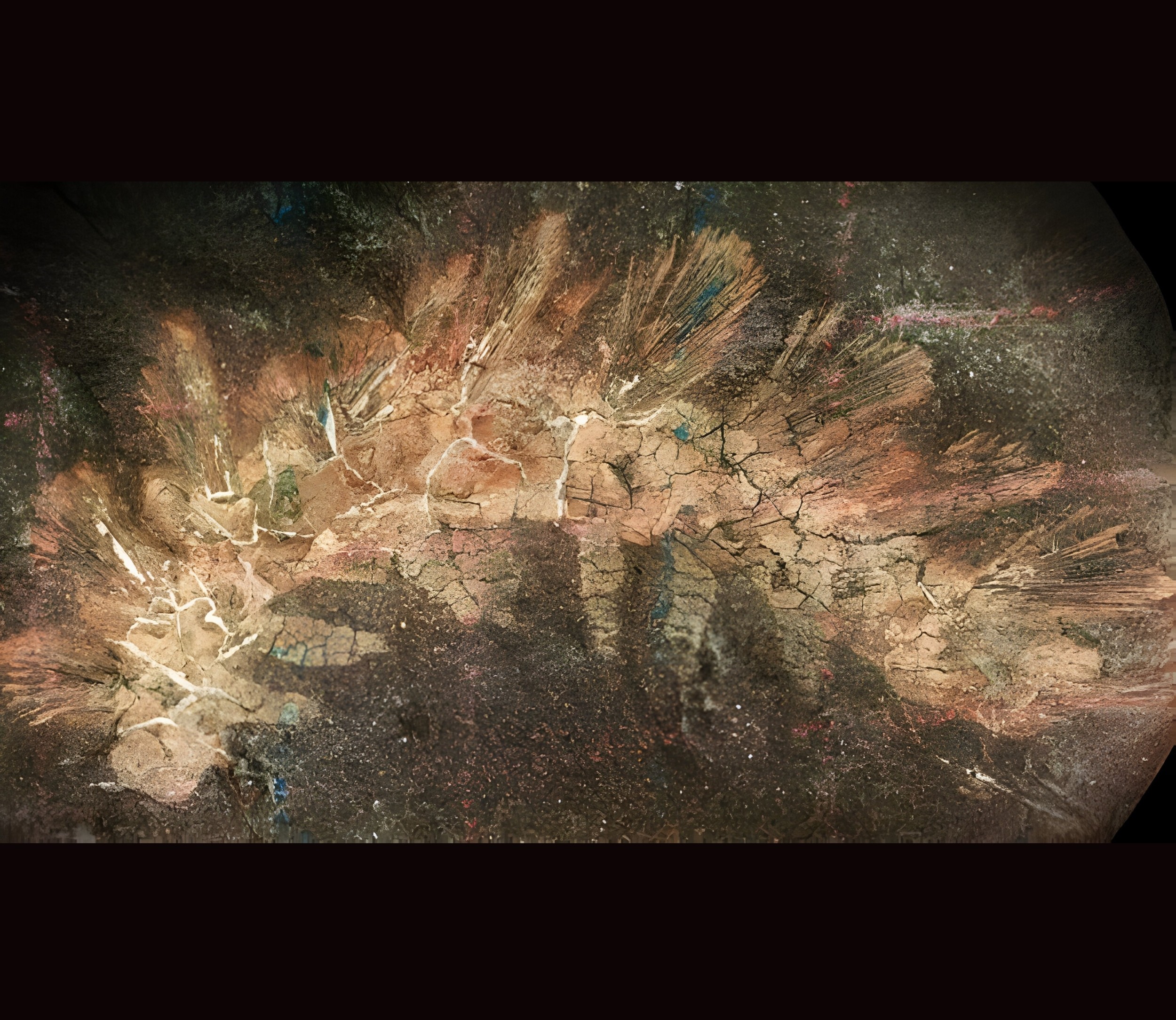A fossil dug up during the Civil War has spent more than a century mislabeled. Once thought to be a seaworm, it turns out the creature is something entirely different – and far more important.
It’s called Palaeocampa anthrax. And according to scientists at the University of Michigan, it may be the first known member of its group to make the jump from sea to land.
Fossil sitting in a museum drawer
The fossil was sitting in a drawer at Harvard University’s Museum of Comparative Zoology. Richard J. Knecht, a postdoctoral researcher from the University of Michigan, decided to take a closer look.
What Knecht saw didn’t match the label. The creature wasn’t a millipede, or a caterpillar, or even a worm. It was a lobopod.
Lobopods are soft-bodied invertebrates that look like worms with legs. They’re considered ancestors of all arthropods – insects, spiders, and crustaceans. Until now, they were believed to be purely marine animals that lived over 500 million years ago.
But this fossil tells a different story. “This is the first evidence that we have that this group actually did leave the ocean,” Knecht said. “Transitioning from a saltwater environment, even to a freshwater environment, is a major evolutionary step.”
“Any time you find a group that made this transition, it’s not just insightful, it’s really important evolutionarily to try to understand how this happened.”
Misidentified for over a century
Since it was first discovered, this lobopod fossil has been misclassified multiple times. Photos of it have appeared in scientific studies, but no one realized what it truly was.
“When the specimen was first discovered, lobopods didn’t even exist as a group,” said Knecht. “This is an example of why revisiting older specimens can be of real value.”
“Even specimens that are iconic and super well known provide an opportunity to make big discoveries just by viewing them with new techniques and fresh perspectives.”
It all came down to the spines
This particular lobopod doesn’t look like much at first glance. It resembles a fuzzy caterpillar, with tiny spines and bristles running down its body.
But when examined more closely, it stands apart from other lobopods. Most lobopodian spines grow in a pattern like stacked cones. Palaeocampa anthrax’s spines don’t. They’re segmented like bamboo, each one ending in a flat, turret-like tip.
Then came the real surprise: orange halos around the tips of the spines. That unusual feature led the team to ask a new question – was this lobopod fossil leaving behind a chemical clue?
To answer that, Knecht teamed up with Nanfang Yu, a physicist at Columbia University. Using infrared spectroscopy, they found fossilized molecules at the tips of the spines.
Defense strategy suits dry ground
These molecules weren’t found anywhere else on the lobopod fossil or the surrounding rock. This pointed to a startling possibility: the creature might have secreted chemicals from the tips of its spines – possibly for defense.
“If I were to place a chip on the table, I’d say this organism was probably more terrestrial or amphibious, specifically because of that tip. It makes more sense in an aerial rather than a subaqueous environment,” Knecht said.
Most sea creatures with spines use them to inject toxins. But if a defense mechanism simply leaks from the tip, it wouldn’t work well underwater. It would just wash away. That kind of system makes a lot more sense on land or near land.
A long shot fossil find
Finding a soft-bodied fossil like this is rare. Invertebrates don’t have bones, and their bodies decompose fast. To preserve one, it must die in just the right conditions – usually in oxygen-poor water with fine sediment that covers the body almost immediately.
That’s what makes sites like Mazon Creek in Illinois and Montceau-les-Mines in France so valuable. These sites, known as Lagerstätten, preserve fossils in exceptional detail. And that’s where Palaeocampa anthrax was found.
The fossil is one of only two lobopods from the Carboniferous period. It’s also the youngest known example of its kind – and potentially the first to show evidence of life outside the sea.
“It’s like winning the lottery not once, but three times. First, that the site existed at all; second, to have this level of preservation; and third, to then find it over 300 million years later,” Knecht said. “It’s a series of statistical miracles.”
Why this fossil matters
This fossil does more than correct a case of mistaken identity. It shows that lobopods – some of the earliest ancestors of insects and spiders – may have begun exploring land far earlier than anyone thought.
It also proves the value of looking at old things in new ways. A mislabeled fossil, sitting in a drawer for 150 years, just rewrote a chapter of life’s story on Earth.
The full study was published in the journal Communications Biology.
Image Credit: Richard J. Knecht
—–
Like what you read? Subscribe to our newsletter for engaging articles, exclusive content, and the latest updates.
Check us out on EarthSnap, a free app brought to you by Eric Ralls and Earth.com.
—–
